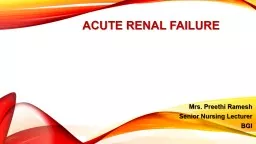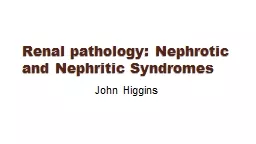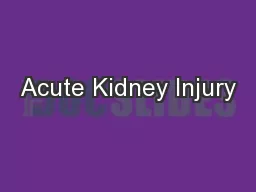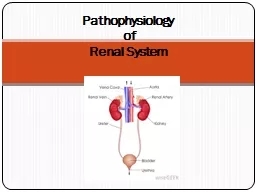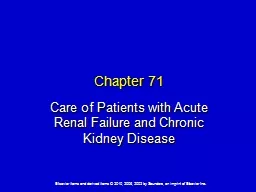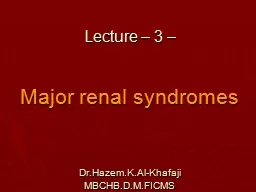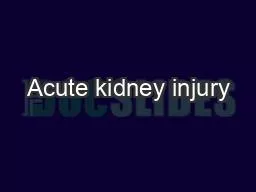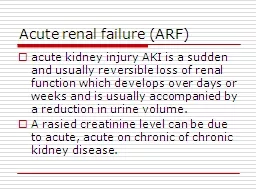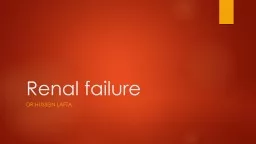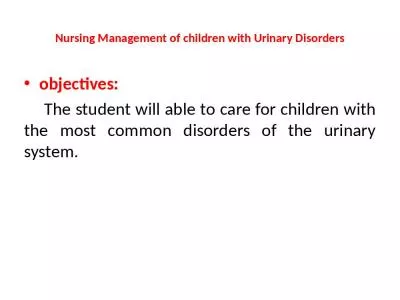PPT-Acute renal failure Mrs. Preethi Ramesh
Author : abigail | Published Date : 2022-02-16
Senior Nursing Lecturer BGI Definition ARF Is the rapid breakdown of renal kidney function that occurs when high levels of uremic toxins waste products of
Presentation Embed Code
Download Presentation
Download Presentation The PPT/PDF document "Acute renal failure Mrs. Preethi Ramesh" is the property of its rightful owner. Permission is granted to download and print the materials on this website for personal, non-commercial use only, and to display it on your personal computer provided you do not modify the materials and that you retain all copyright notices contained in the materials. By downloading content from our website, you accept the terms of this agreement.
Acute renal failure Mrs. Preethi Ramesh: Transcript
Download Rules Of Document
"Acute renal failure Mrs. Preethi Ramesh"The content belongs to its owner. You may download and print it for personal use, without modification, and keep all copyright notices. By downloading, you agree to these terms.
Related Documents

